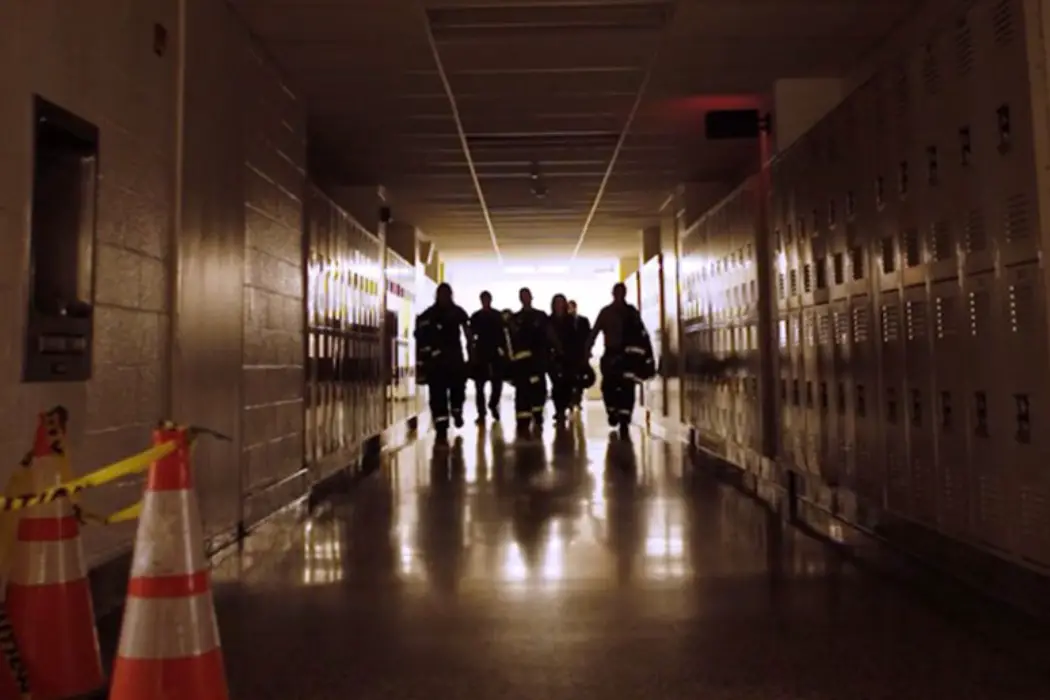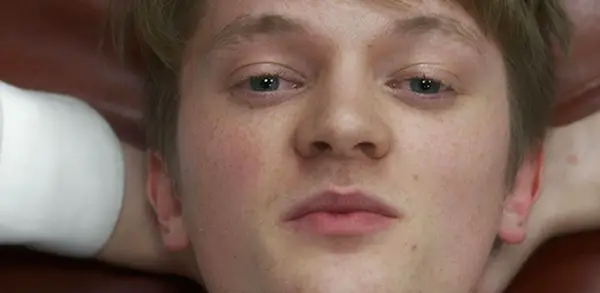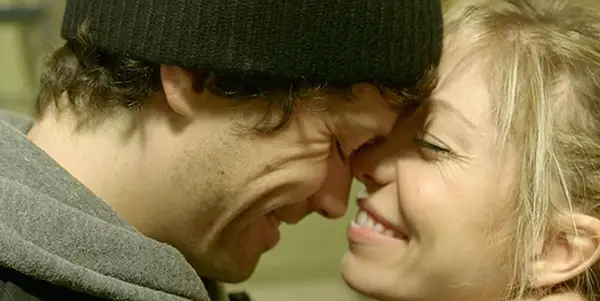THE RAINBOW EXPERIMENT: Ambitious Education Epic Stretched Too Thin

Brianna Zigler is a 23-year-old film journalist based in the…
Teenagers are idiots. I can say this because I was one. They’re frustrating, infuriating, moody assholes, and they f*ck around and make stupid decisions that they might not realize ripple outward and effect people other than themselves. But teenage idiocy often finds itself complemented by adult incompetence, a concoction of inadequacy that can bubble over to disastrous consequences.
Difficult teenagers and even more difficult adults are, thus, at the forefront of director Christina Callas’s film The Rainbow Experiment – a character study slash who-dun-it revolving around a near-fatal science experiment accident and the people both immediately and marginally affected by it. It’s a determined and thoughtful deep dive into emotional cause-and-effects over the course of a lengthy two-hour runtime, but middling technical aspects and a meandering script pull the effort down deeper than intended – if not for a lack of commitment to the craft.
It Happened One Chemistry Class
At a high school in the heart of bustling New York City, class clown Matty Fairchild (Connor Seimer) is rushed to the hospital, pronounced comatose. The cause of such tragedy? A faulty experiment in Chemistry class at the hands of bewildered, traumatized teacher Ms. Dhawan (Nina Mehta), who sent Matty to the front of her class to participate in the experiment as punishment for being especially disruptive. The experiment is supposed to cause a series of different solutions to change colors, but when Matty drops a splint into the Bunsen burner, the flame erupts in a ball of fire and leaves him severely burned.

Investigators are sent to the school to question faculty and students in an effort to figure out exactly how an experiment set up to run without a hitch, went off the rails so gravely. The investigation acts as the jumping-off point for the rest of the story, working itself between flashbacks to the incident and present-day shenanigans; parents, students, and teachers alike seemingly unraveling at their seams over this calamity. The storylines of the mourning family of Matty, his heartbroken friends, the incompetent principal and frustrated, confused faculty, are among the many interwoven in the script to service the narrative of different forms of spiraling grief.
A Web Not Quite Well-Spun
Matty isn’t dead, but he certainly isn’t alive either. Instead, he acts as a fourth-wall-breaking spirit guide for the audience, providing insight into the people he knew, the relationships between them, and the accident itself, as his body lies on a hospital bed elsewhere. Connor Seimer is an energetic and charismatic actor, and it’s disappointing that he couldn’t have been used as a real character in the film as opposed to a narrative device (it’s also quite distracting that the actor who plays his father looks exactly the same age as Matty). In the meantime, full reign is given to lesser-talented actors in lead and supporting roles, though there isn’t any one that could be called our protagonist. This only serves to actively detach us from the film.
However, the majority of the film’s shortcomings can be attributed to technicalities – flat lighting, uneven sound, and rambling dialogue make the experience feel less like a cinematic fictional narrative and more like a truth-to-life documentary that wasn’t cut quite enough in the editing room. Scenes that might have felt tense or poignant instead drag on and contribute to inconsistent pacing, while too much exposition is consistently handed over robbing the potential for nuance or real mystery. We simultaneously know too much about these characters and not enough, and it furthers this feeling that we’re not really watching a narrative and more an unfolding of events that have no place being seen – not even for voyeuristic purposes.

There are admirable flourishes employed which, while interesting, make the story feel incoherent, such as the use of split screens and even quadruple screens. These depict multiple scenes happening at once, or even a single scene unfolding in a series of overlapping moments and dialogue. Though ambitious, they cause the film’s numerous threads to become harder to follow. Still, it is not a careless or poorly-produced feature. Despite any distracting technical flaws, there are constant glimmers of intrigue and genuine narrative strength that could’ve been given full reign if the script were tighter, and the characters more focused and better-acted.
The Rainbow Experiment: Conclusion
In a story that might have been an engaging and thought-provoking character study, the two hour runtime isn’t well-served. The clashing of teen and adult angst untangling one another in the face of tragedy instead fizzles out as opposed to tearing through in a blaze of emotionally-charged glory. It’s a strong idea that isn’t executed as it should have been in order to produce a wholly engaging piece, and though clearly created with care, The Rainbow Experiment ends up less enthralling than its titular incident.
Have you had the chance to see The Rainbow Experiment? What were your thoughts? Let us know in the comments below!
The Rainbow Experiment is currently available to stream!
Does content like this matter to you?
Become a Member and support film journalism. Unlock access to all of Film Inquiry`s great articles. Join a community of like-minded readers who are passionate about cinema - get access to our private members Network, give back to independent filmmakers, and more.
Brianna Zigler is a 23-year-old film journalist based in the Philadelphia suburbs and an alumni of Penn State University. She is a staff writer for Screen Queens, has bylines in Reel Honey Mag and Much Ado About Cinema, and has had a short story published in the horror literary journal Hinnom Magazine. She loves bad movies, Twin Peaks, and her pet parrot.













